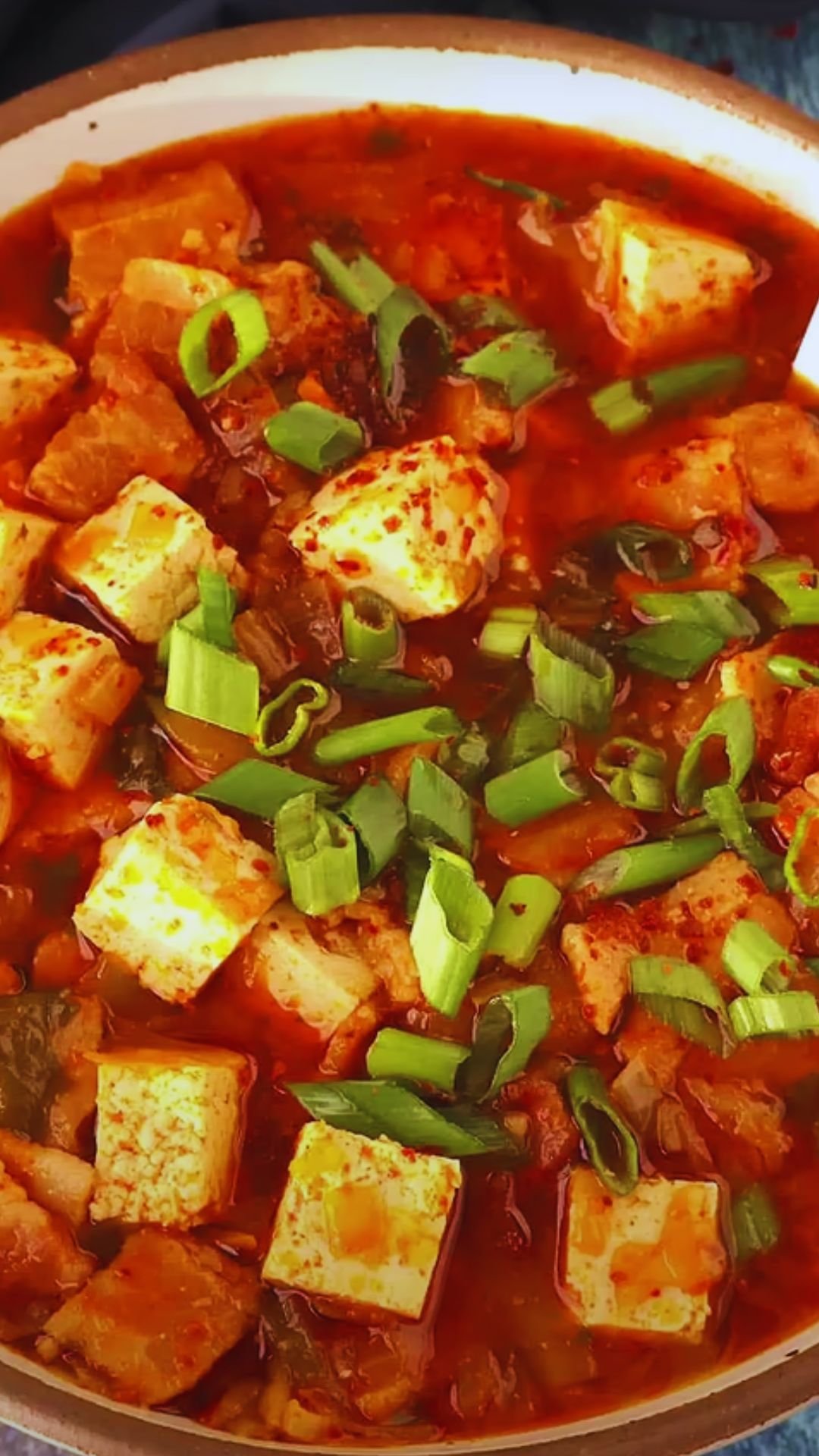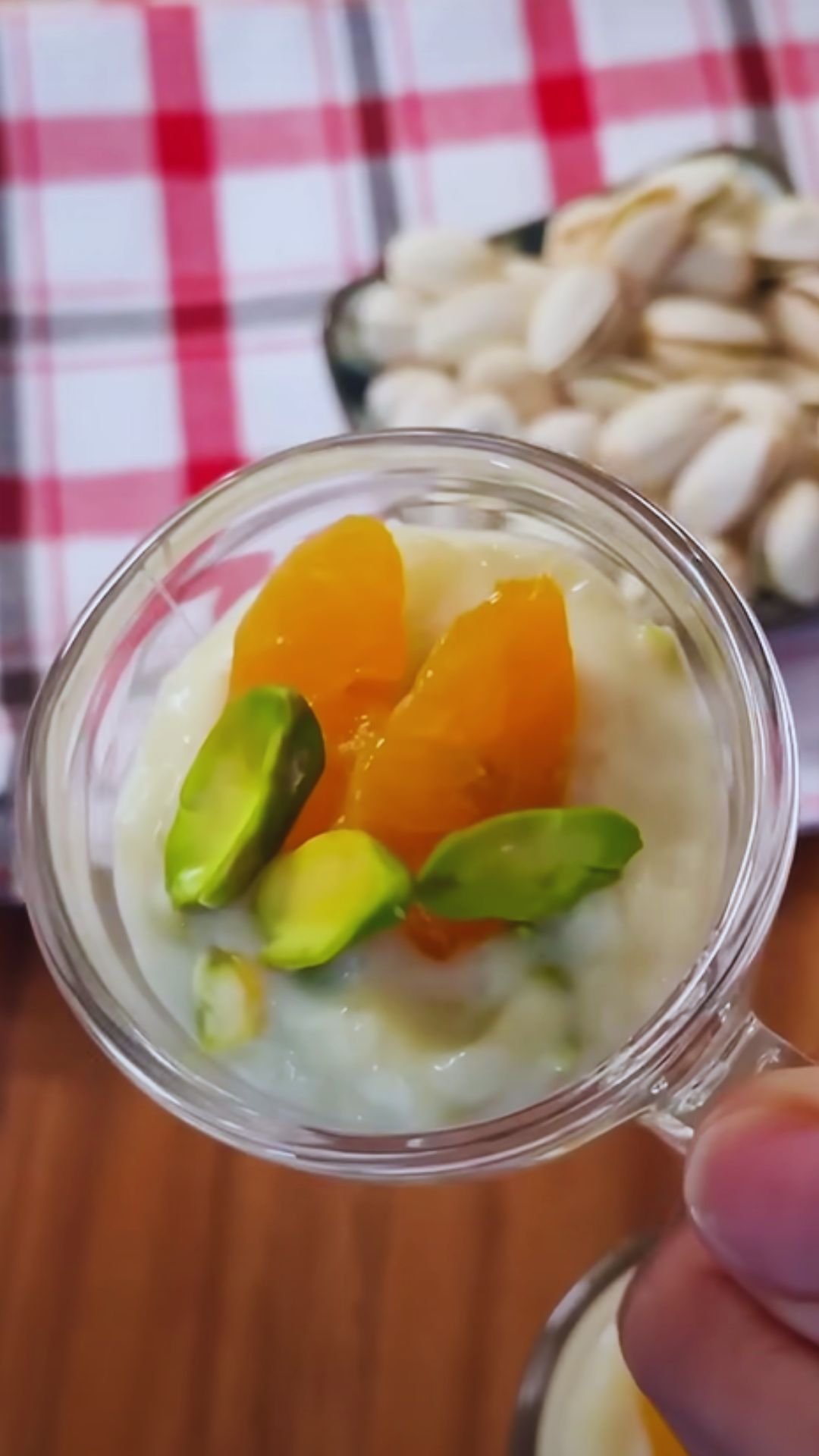There’s something magical about a bubbling pot of kimchi jjigae that speaks directly to the soul. The moment that spicy, savory aroma fills my kitchen, I know I’m about to experience one of Korea’s most beloved comfort foods. As someone who’s spent years perfecting this dish, I’m excited to share everything I know about creating authentic kimchi jjigae at home.
Kimchi jjigae (김치찌개) isn’t just a stew—it’s a cultural cornerstone that transforms humble ingredients into a symphony of flavors. In this comprehensive guide, I’ll walk you through everything from selecting the perfect kimchi to balancing the complex flavors that make this dish so irresistible.
What is Kimchi Jjigae?
Kimchi jjigae is a traditional Korean stew made with fermented kimchi as its star ingredient. The word “jjigae” simply means “stew” in Korean, but there’s nothing simple about the deep, complex flavors in this dish. It’s typically served bubbling hot in a stone bowl, creating that satisfying sizzle when it reaches your table.
What makes kimchi jjigae special is how it transforms as it cooks—the fermented kimchi mellows and merges with the broth while still maintaining its distinctive tang. It’s a perfect balance of spicy, savory, and slightly sour notes that creates an incredibly satisfying meal, especially on cold days.
The Heart of the Dish: Choosing the Right Kimchi
Before we dive into the cooking process, let’s talk about the most crucial ingredient—the kimchi itself. Not all kimchi is created equal when it comes to making exceptional jjigae.
Age Matters
For the best kimchi jjigae, I always use well-fermented kimchi that’s at least 2-3 weeks old. Here’s why aged kimchi makes such a difference:
- Enhanced Flavor Profile: As kimchi ferments, it develops a deeper umami character and pleasant sourness that gives jjigae its signature taste.
- Better Texture: Aged kimchi softens naturally, allowing it to meld beautifully with other ingredients during cooking.
- Stronger Broth Base: The fermented kimchi juice (or “brine”) is packed with flavor compounds that create a robust foundation for your stew.
Fresh kimchi can work in a pinch, but your stew will lack that distinctive tang that makes kimchi jjigae so special. If you only have fresh kimchi, I recommend adding a tablespoon of white vinegar or rice vinegar to mimic some of that fermented flavor.
Napa vs. Radish Kimchi
While napa cabbage kimchi (배추김치/baechu kimchi) is the most common choice, don’t overlook these variations:
- Napa Cabbage Kimchi: The standard choice with excellent texture and balanced flavor.
- Radish Kimchi (깍두기/kkakdugi): Creates a slightly sweeter jjigae with interesting texture.
- Mixed Kimchi: Combining both types gives you the best of both worlds!
I personally prefer using predominantly cabbage kimchi with about 25% radish kimchi added for depth and textural contrast.
Essential Ingredients for Authentic Kimchi Jjigae
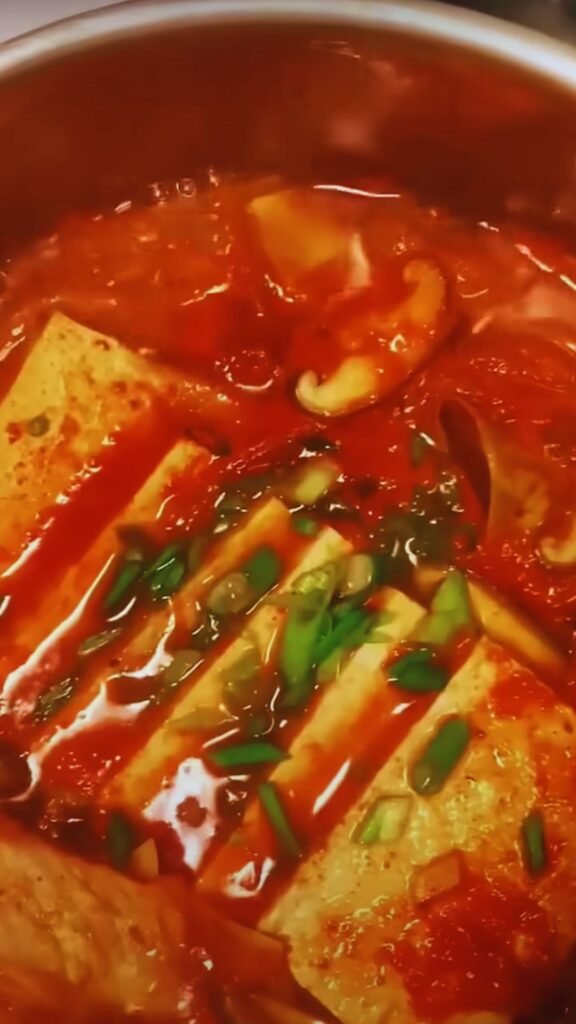
For an authentic kimchi jjigae that transports you straight to a cozy Korean home, gather these ingredients:
| Ingredient | Amount | Notes |
|---|---|---|
| Aged kimchi | 2 cups | At least 2-3 weeks old for best flavor |
| Kimchi juice | 2-3 tablespoons | Reserved from the kimchi container |
| Pork belly or shoulder | 1/2 pound | Sliced thinly (can substitute with beef or skip for vegetarian) |
| Firm tofu | 1 package (14 oz) | Cut into 1-inch cubes |
| Korean red pepper flakes (gochugaru) | 1-2 tablespoons | Adjust according to your spice preference |
| Korean red pepper paste (gochujang) | 1 tablespoon | Adds depth and sweetness |
| Garlic | 4-5 cloves, minced | Fresh is always best |
| Onion | 1/2 medium | Thinly sliced |
| Green onions | 3-4 stalks | Sliced diagonally, whites and greens separated |
| Mushrooms (optional) | 1 cup | Shiitake or button mushrooms |
| Anchovy stock or water | 2-3 cups | Homemade stock creates richer flavor |
| Fish sauce | 1 tablespoon | For extra umami (can substitute with soy sauce) |
| Sugar | 1 teaspoon | Balances the sourness |
| Sesame oil | 1 teaspoon | Added at the end for aroma |
| Neutral cooking oil | 1 tablespoon | For sautéing |
Vegetarian/Vegan Adaptation
For a vegetarian or vegan version:
- Substitute the meat with more mushrooms, like king oyster or shiitake
- Use vegetable stock instead of anchovy stock
- Replace fish sauce with soy sauce or miso paste
- Add a tablespoon of nutritional yeast for umami depth
Traditional Equipment for Authentic Results
While not strictly necessary, these traditional Korean cooking vessels enhance both the cooking process and presentation:
- Ttukbaegi (뚝배기): These earthenware pots retain heat wonderfully, keeping your jjigae bubbling hot throughout the meal. They also add minerals to the broth for a more complex flavor.
- Dolsot (돌솥): Stone pots work similarly to ttukbaegi but are made of different material. Both create that signature tableside sizzle.
- Heavy-bottomed pot: If you don’t have Korean cookware, any thick-bottomed pot will work well.
My Step-by-Step Cooking Process
Now let’s dive into the actual cooking process. I’ve refined this method over many attempts to achieve the perfect balance of flavors.
Step 1: Prepare Your Ingredients
Proper prep makes the cooking process seamless:
- Chop kimchi into bite-sized pieces (approximately 1-inch squares)
- Slice meat thinly against the grain
- Cube tofu and set aside
- Mince garlic and slice onions
- Separate green onion whites from greens (whites go in during cooking, greens for garnish)
Step 2: Build Your Flavor Base
- Heat your cooking vessel over medium heat
- Add cooking oil and sauté the pork until it begins to render its fat (about 2-3 minutes)
- Add kimchi and stir-fry for 3-4 minutes until it begins to soften
- Add garlic, onion, and white parts of green onions, continuing to stir-fry for another 2 minutes
- Stir in gochugaru and gochujang, coating everything evenly
Step 3: Create the Stew
- Pour in kimchi juice and anchovy stock (or water)
- Add fish sauce and sugar
- Bring the mixture to a boil, then reduce heat to a simmer
- Cover and let cook for 15-20 minutes, allowing flavors to meld
Step 4: Final Touches
- Add tofu cubes gently to avoid breaking them
- Simmer for another 5 minutes until tofu is heated through
- Taste and adjust seasoning if needed
- Drizzle with sesame oil just before serving
- Garnish with sliced green onion tops
The entire cooking process takes about 40 minutes, with most of that being hands-off simmering time. The result is a deeply flavorful, complex stew that’s greater than the sum of its parts.
Regional Variations Worth Exploring
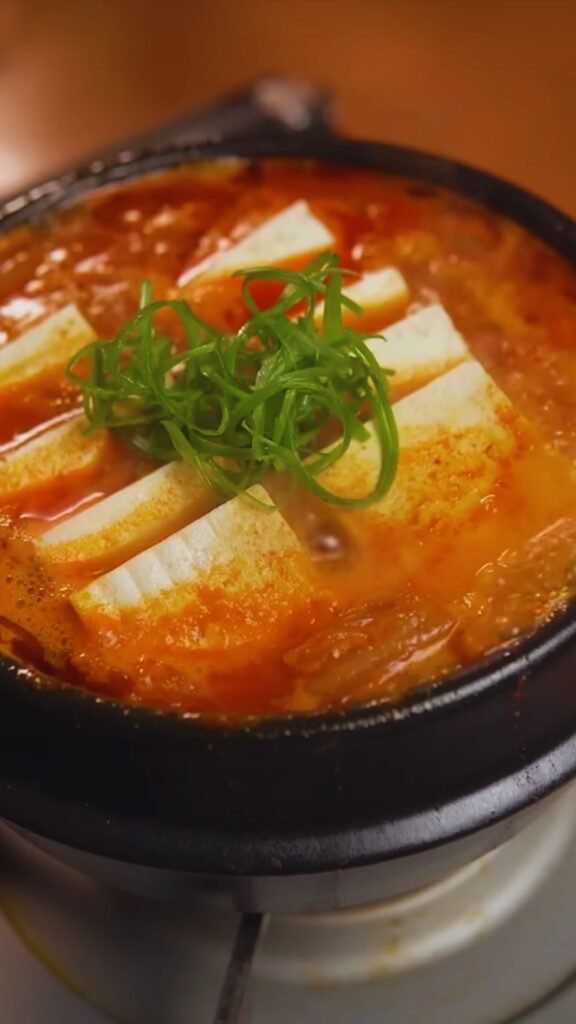
While the basic formula remains the same, regional variations across Korea offer interesting twists:
| Region | Distinctive Characteristics | Special Ingredients |
|---|---|---|
| Seoul/Gyeonggi | Balanced flavor profile with medium spice | Often includes more vegetables |
| Jeolla | Spicier with complex flavor layers | Uses more gochugaru and may include fermented shrimp paste |
| Gyeongsang | Heartier with more substantial ingredients | Often includes potatoes and sometimes sweet potato noodles |
| Coastal regions | Seafood-forward versions | Features clams, squid, or other seafood instead of pork |
Each variation reflects the local ingredients and preferences of the region. I encourage experimenting with these variations to discover your favorite style.
Common Mistakes to Avoid
After years of making this dish, I’ve identified some common pitfalls that can prevent your kimchi jjigae from reaching its full potential:
- Using fresh kimchi: As mentioned earlier, properly aged kimchi is crucial for authentic flavor.
- Adding too much liquid: Kimchi jjigae should be concentrated and flavorful, not watery. Start with less liquid than you think you need—you can always add more.
- Not giving it enough time: Rushing this dish prevents the flavors from fully developing. Allow at least 20 minutes of simmering time.
- Overcomplicating with too many ingredients: Traditional kimchi jjigae is relatively simple. Don’t dilute the core flavors by adding too many extras.
- Boiling aggressively: A gentle simmer allows the flavors to meld while preserving the texture of the ingredients. Vigorous boiling can make the kimchi mushy and the tofu fall apart.
- Adding tofu too early: Tofu is delicate and can break down if simmered too long. Add it in the final stages of cooking.
Serving Suggestions
Kimchi jjigae is traditionally served as part of a Korean meal with several supporting players:
- Steamed white rice: The neutral flavor balances the spicy stew perfectly
- Banchan (side dishes): 2-3 small side dishes like seasoned spinach, bean sprouts, or pickled vegetables
- Kkakdugi (radish kimchi): Its crunchy texture complements the soft ingredients in the stew
- Raw vegetables: Fresh cucumber or lettuce for wrapping bites of meat from the stew
For a complete Korean meal experience, serve everything together family-style. The jjigae should be bubbling hot in its cooking vessel placed in the center of the table, with all accompaniments arranged around it.
Nutritional Benefits of Kimchi Jjigae
Beyond its incredible flavor, kimchi jjigae offers impressive nutritional benefits:
| Nutritional Element | Benefits | Source in Kimchi Jjigae |
|---|---|---|
| Probiotics | Gut health, immune support | Fermented kimchi |
| Vitamin C | Immune function, skin health | Napa cabbage in kimchi |
| Vitamin A | Vision, immune function | Red pepper in kimchi |
| Protein | Muscle building, satiety | Pork, tofu |
| Capsaicin | Anti-inflammatory properties | Red pepper flakes |
| B vitamins | Energy metabolism | Pork, kimchi |
| Iron | Oxygen transport, energy | Pork, anchovy stock |
| Calcium | Bone health | Tofu, anchovy stock |
The fermentation process not only enhances flavor but also increases the bioavailability of many nutrients. This makes kimchi jjigae not just delicious but nutritionally dense as well.
Make-Ahead and Storage Tips
Kimchi jjigae is one of those rare dishes that actually improves with time. Here’s how to make the most of leftovers:
- Make ahead: Prepare the stew without tofu, then refrigerate. Reheat gently and add tofu just before serving.
- Storage: Keep in an airtight container in the refrigerator for up to 3 days. The flavors will continue to develop.
- Reheating: Warm gently over medium-low heat until bubbling. Add a splash of water if needed to maintain consistency.
- Freezing: While possible, freezing isn’t ideal as it can affect the texture of the tofu and kimchi. If freezing, do so without tofu and add fresh tofu when reheating.
A Note on Heat Level
Korean food has a reputation for being spicy, but kimchi jjigae can be adjusted to suit your preference:
- Mild: Use only 1 teaspoon of gochugaru and rinse the kimchi briefly to remove some heat
- Medium: Follow the recipe as written with 1-2 tablespoons of gochugaru
- Hot: Increase gochugaru to 3 tablespoons and add a sliced fresh chili pepper
- Extra hot: Add gochugaru to taste and include some fresh Thai bird’s eye chilies
Remember that the heat level of your kimchi will also impact the final spiciness of your jjigae. Always taste as you go and adjust accordingly.
My Favorite Kitchen Shortcuts
While I believe in traditional methods for the best results, these shortcuts can help when time is limited:
- Pre-made anchovy stock: Many Korean markets sell anchovy stock packets that dissolve in water.
- Kimchi jjigae sauce packets: These contain the essential seasonings in one package. While not as good as homemade, they’re convenient for busy weeknights.
- Pressure cooker method: Use an Instant Pot to reduce cooking time to about 15 minutes total while still developing deep flavors.
- Prepare-ahead kimchi: Chop kimchi in advance and store it in the refrigerator to save prep time.
The Cultural Significance of Kimchi Jjigae
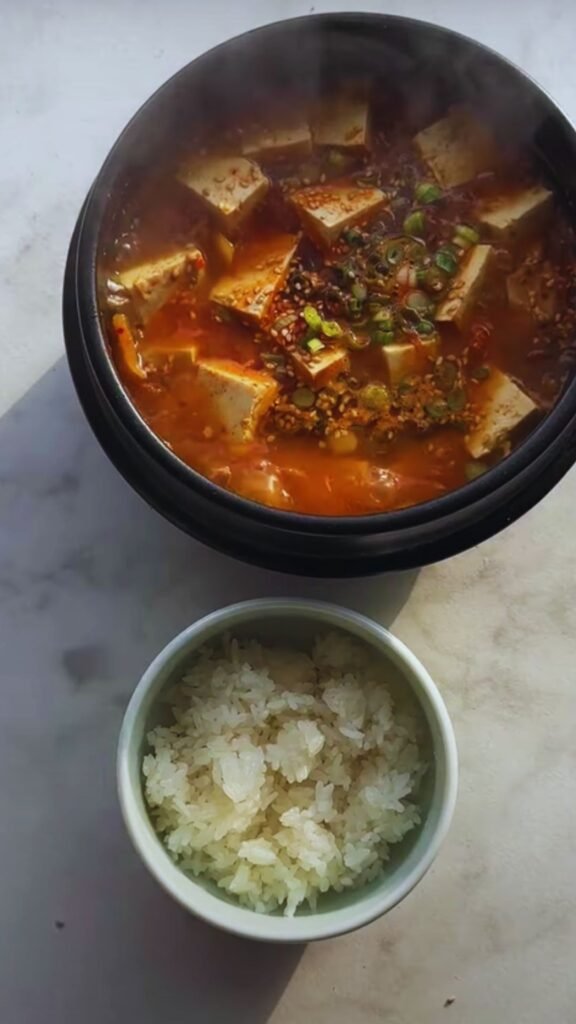
In Korean culture, kimchi jjigae represents more than just a meal—it’s a symbol of resourcefulness and the zero-waste philosophy that has been part of Korean cuisine for centuries. When kimchi begins to turn too sour for fresh eating, transforming it into jjigae gives it new life and creates something even more delicious.
This stew is also considered soul food in Korea—the dish mothers make when their children are sick or having a difficult day. There’s even a saying that a Korean household without kimchi jjigae is incomplete. The dish connects generations through shared experiences and familiar flavors that evoke memories of home.
Frequently Asked Questions
Q: Can I use store-bought kimchi for this recipe?
Absolutely! Store-bought kimchi works wonderfully, especially if you let it age in your refrigerator for a few weeks before using it for jjigae. Look for kimchi with minimal preservatives for the best flavor.
Q: My kimchi jjigae tastes too sour. How can I fix it?
If your kimchi was very well-fermented, the stew might end up too sour. Balance it by adding a bit more sugar (start with an additional teaspoon) or a tablespoon of gochujang, which adds sweetness along with spice.
Q: Can I make kimchi jjigae without meat?
Yes! Vegetarian kimchi jjigae is delicious. Replace the meat with more mushrooms for umami flavor, and use vegetable stock instead of anchovy stock. Just be aware that traditional kimchi often contains fish sauce or salted shrimp, so check ingredients if you’re strictly vegetarian or vegan.
Q: Why is my kimchi jjigae watery instead of rich and flavorful?
This usually happens when you use too much liquid or don’t simmer it long enough. Try reducing the amount of stock, using more kimchi juice, and allowing it to simmer uncovered for 5-10 minutes at the end to concentrate the flavors.
Q: Can I add other vegetables to kimchi jjigae?
While traditional kimchi jjigae is relatively simple, you can certainly add vegetables like zucchini, potato, or carrots. Just be aware that each addition will slightly change the flavor profile of the dish.
Q: How spicy is authentic kimchi jjigae?
Traditional kimchi jjigae is moderately spicy, but the heat level can vary dramatically based on the kimchi used and how much additional gochugaru you add. Start with less if you’re sensitive to spice—you can always add more later.
Q: What’s the best type of tofu to use?
Medium-firm or firm tofu works best for kimchi jjigae. Soft tofu will fall apart too easily, while extra-firm might remain too chewy. The tofu should hold its shape while still absorbing the flavors of the stew.
Q: Is there a non-spicy version of kimchi jjigae?
While kimchi itself is inherently spicy, you can make a milder version by using more rinsed kimchi and omitting the additional gochugaru. However, it will never be completely non-spicy while still remaining authentic.
Final Thoughts
Mastering kimchi jjigae is like gaining a superpower—with this one recipe, you can create a satisfying meal that nourishes body and soul. What I love most about this dish is its accessibility; once you understand the basic principles, you can adapt it to your taste preferences and what’s available in your kitchen.
I hope this guide inspires you to create your own bubbling pot of comfort. Remember that like many traditional dishes, kimchi jjigae is forgiving and improves with practice. Each time you make it, you’ll develop a better understanding of the balance of flavors and how to achieve your perfect version.
There’s something deeply satisfying about carrying on this culinary tradition, whether you have Korean heritage or are simply an enthusiast of the cuisine. So gather your ingredients, prepare your rice, and get ready to experience one of Korea’s most beloved comfort foods in all its spicy, savory glory.
